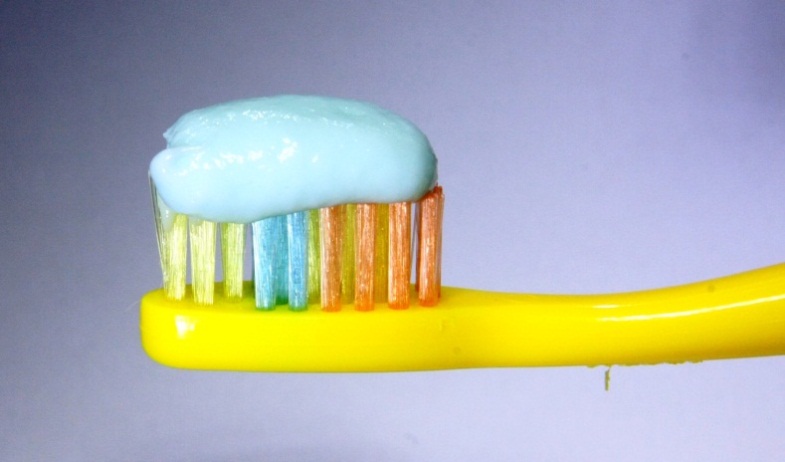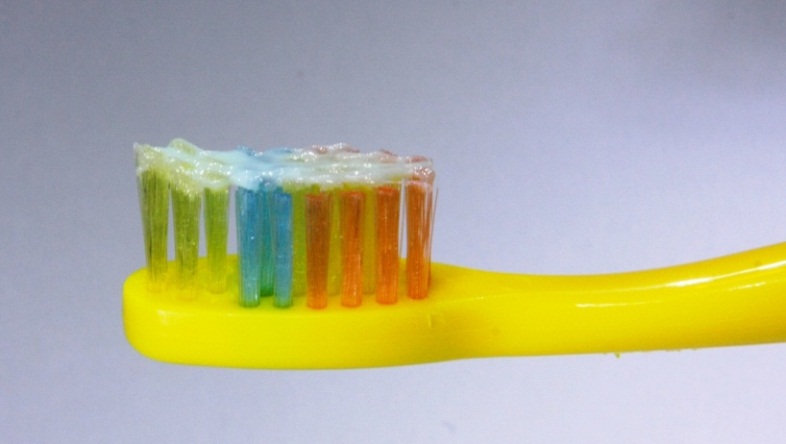Att 3d_Hand Cards 2015-16
Att_3d HH_Hand Cards 15-16.docx
National Health and Nutrition Examination Survey
Att 3d_Hand Cards 2015-16
OMB: 0920-0950
Attachment 3d
2015-16
NHANES
HAND CARDS
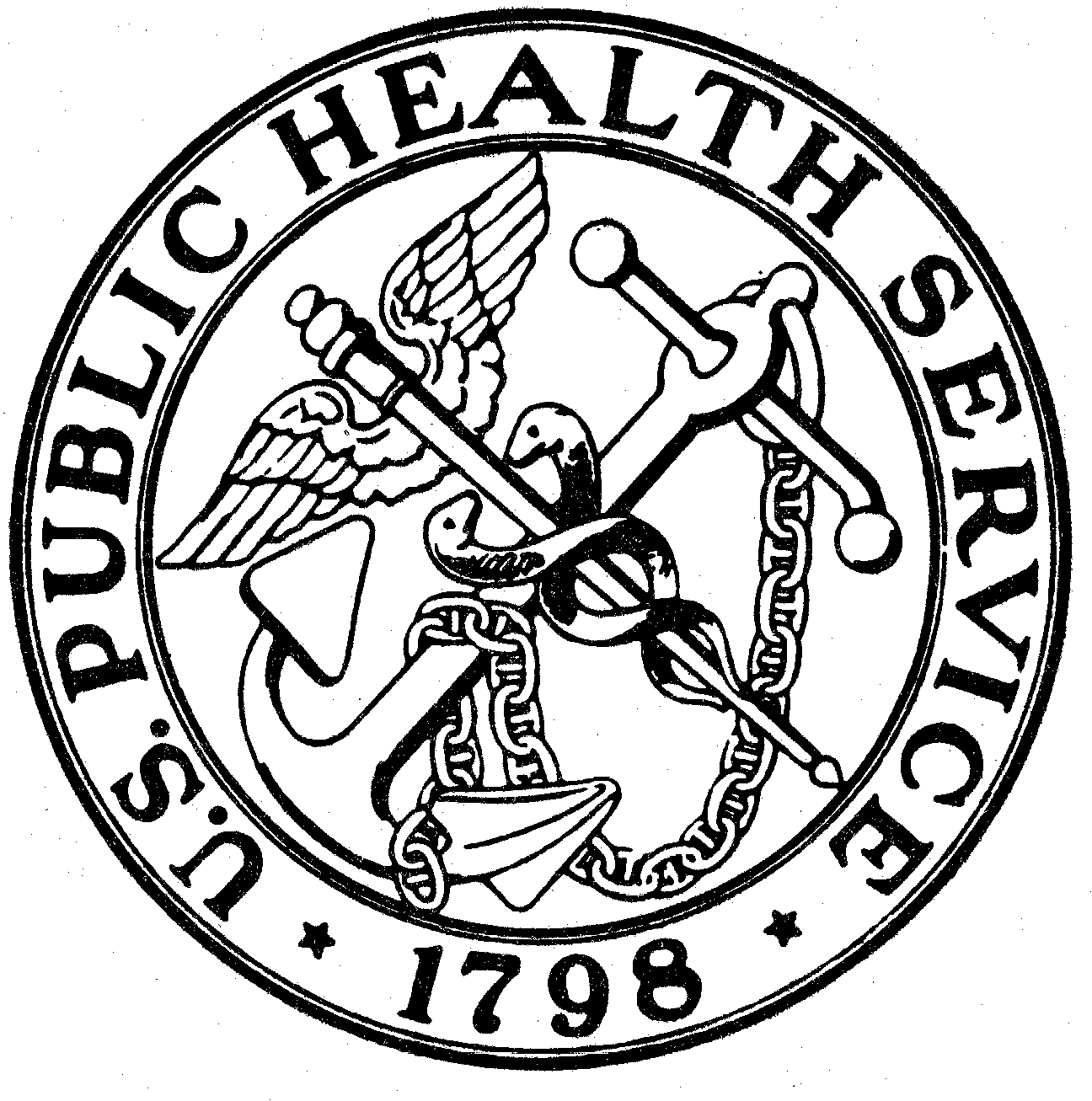
December 2014
SP
|
PFQ1
No difficulty
Some difficulty
Much difficulty
Unable to do
Do not do this activity
PFQ2
Arthritis/rheumatism
Back or neck problem
Birth defect
Cancer
Depression/anxiety/emotional problem
Other developmental problem (such as cerebral palsy)
Diabetes
Fractures, bone/joint injury
Hearing problem
Heart problem
Hypertension/high blood pressure
Lung/breathing problem
Mental retardation
Other injury
Senility
Stroke problem
Vision/problem seeing
Weight problem
Other impairment/problem
HEQ1
Prescribed Medicines for Hepatitis B
Adefovir
Alinia
Baraclude
Entecavir
Epivir
Epivir HBV
Hepsera
Interferon / Peginterferon
Intron A
Lamivudine
Nitazoxanide
Pegasys
Roferon-A
Telbivudine
Tenofovir
Tyzeka
Viread
HEQ2
Prescribed Medicines for Hepatitis C
Alinia
Boceprevir
Copegus
Incivek
Infergen
Interferon / Peginterferon
Intron A
Nitazoxanide
Olysio (simeprevir)
Pegasys
Pegintron
Rebetol
Rebetron
Ribapak
Ribasphere
Ribatab
Ribavirin
Roferon-A
Sovaldi (sofosbuvir)
Sylatron
Telaprevir
Victrelis
Virazole
DIQ1
Prediabetes
Impaired fasting glucose
Impaired glucose tolerance
Borderline diabetes
DIQ2
Risk Factors:
Family history
Overweight
Age
Poor diet
Race
Had a baby that weighed over 9 lbs. at birth
Lack of physical activity or sedentary lifestyle
Medical Conditions:
High blood pressure
High blood sugar
High cholesterol
Hypoglycemic
Experienced Symptoms:
Extreme hunger
Tingling/numbness in hands or feet
Blurred vision
Increased fatigue
Other Factors:
Anyone could be at risk
Doctor warning
Other, specify
Gestational diabetes
Frequent urination
Thirst
DIQ3
Less than 6
Less than 7
Less than 8
Less than 9
Less than 10
Provider did not specify a goal
CDQ1
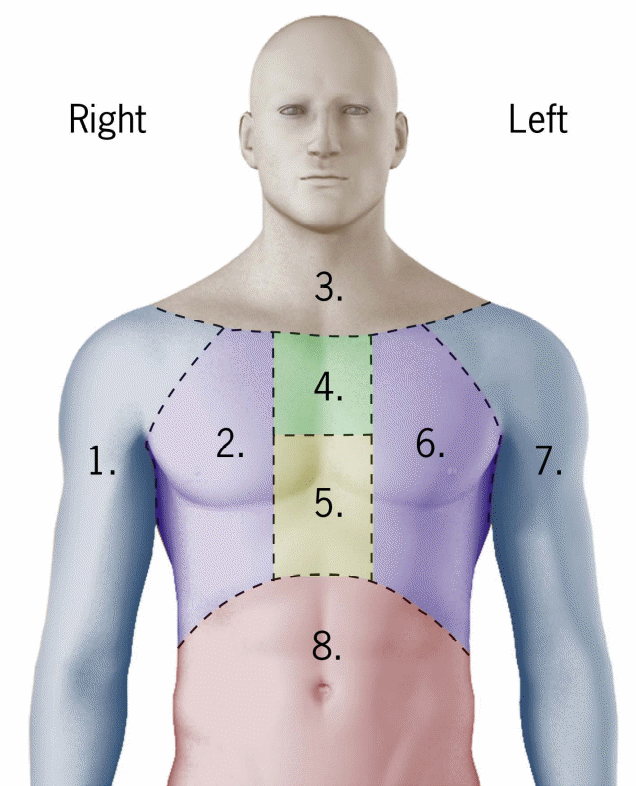
OSQ1
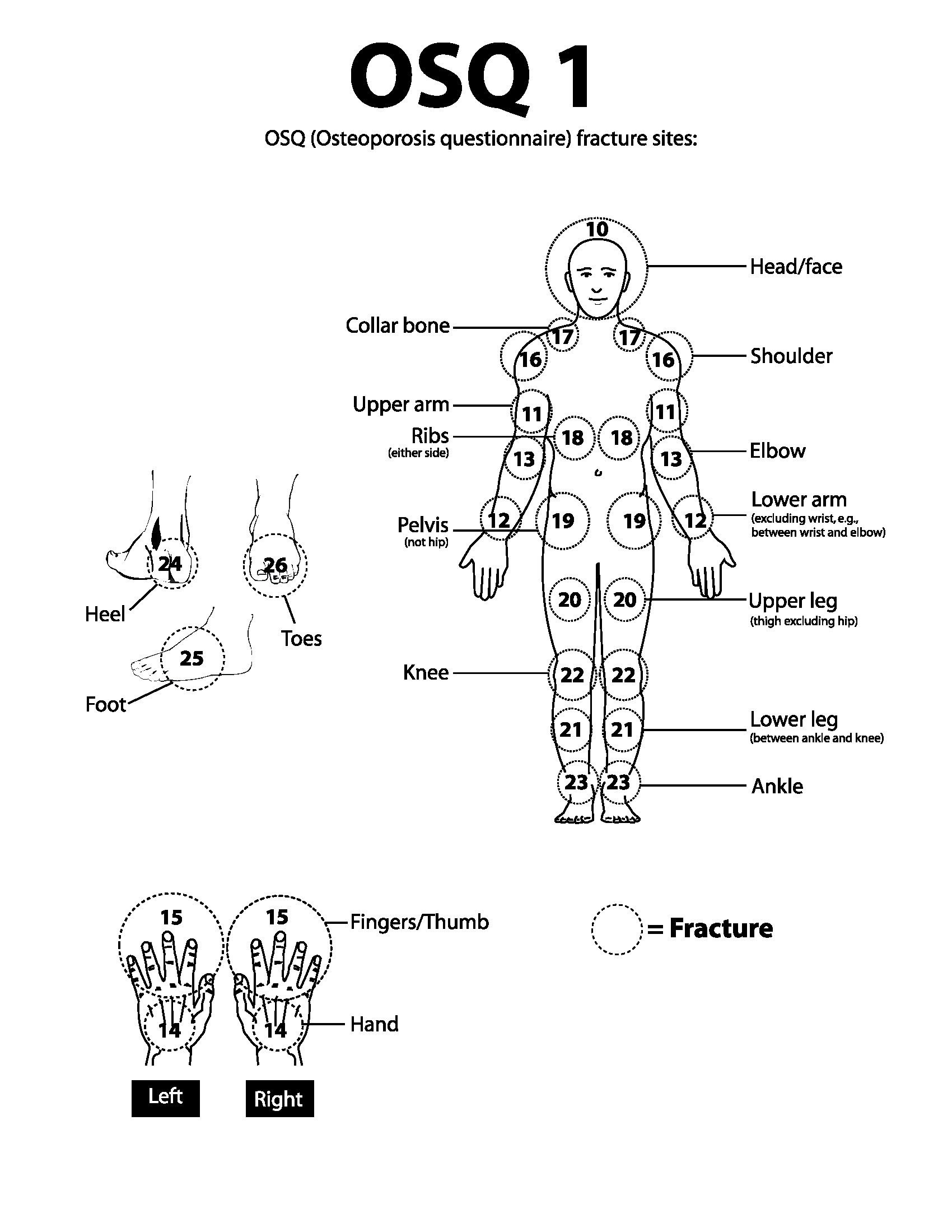
OSQ2
Prescribed Medicines for Osteoporosis
Fosamax
Boniva
Actonel
Reclast
Miacalcin
Fortical
Evista
Forteo
OSQ3
Hip replacement
Knee replacement
Plates or pins to fix a broken bone
Dental implants (posts)
Metal sutures or clips
Stents
Pacemakers
AUQ1
Always
Usually
About half the time
Seldom
Never
AUQ2
Always
Usually
About half the time
Seldom
Never
No noise exposure past 12 months
DEQ1
Get a severe sunburn with blisters
A severe sunburn for a few days with peeling
Mildly burned with some tanning
Turning darker without a sunburn
Nothing would happen in half an hour
Other
DEQ2
Always
Most of the time
Sometimes
Rarely
Never
OHQ1
Could not afford the cost
Did not want to spend the money
Insurance did not cover recommended procedures
Dental office is too far away
Dental office is not open at convenient times
Another dentist recommended not doing it
Afraid or do not like dentists
Unable to take time off from work
Too busy
I did not think anything serious was wrong/expected dental problems to go away
OHQ2
Very often
Fairly often
Occasionally
Hardly ever
Never
OHQ3
1. Full load |
|
|
|
2. Half load |
|
|
|
3. Pea size |
|
|
|
4. Smear |
|
PAQ1
Baseball/softball
Basketball
Bocce ball
Cheerleading
Dance
Football
Frisbee/ultimate frisbee
Golf
Gymnastics
Hockey
Lacrosse
Running
Soccer
Swimming/diving
Tennis
Track and field
Trampoline
Volleyball
Wrestling
Other
PAQ2
Strongly agree
Agree
Neither agree nor disagree
Disagree
Strongly disagree
SLQ1
Never
Rarely – 1 time a month
Sometimes – 2 to 3 times a month
Often – 5 to 15 times a month
Almost always – 15 to 30 times a month
DBQ1
Never
Rarely – less than once a week
Sometimes – once a week or more, but less than once a day
Often – once a day or more
DBQ2
A regular milk drinker for most or all of lifetime, including childhood
Never has been a regular milk drinker
Milk drinking has varied over lifetime – sometimes has been a regular milk drinker and sometimes has not been a regular milk drinker
DBQ3
Never
Rarely – less than once a week
Sometimes – once a week or more, but less than once a day
Often – once a day or more
DBQ4
examples of frozen meals & frozen pizzas

DBQ5
Often
Sometimes
Rarely
Never
WHQ1
Ate less food (amount)
Switched to foods with lower calories
Ate less fat
Ate fewer carbohydrates
Exercised
Skipped meals
Ate “diet” foods or products
Used a liquid diet formula such as Slimfast or Optifast
Joined a weight loss program such as Weight Watchers, Jenny Craig, Tops, or Overeaters Anonymous
Followed a special diet such as Dr. Atkins, South Beach, other high protein or low carbohydrate diet, cabbage soup diet, Ornish, Nutrisystem, Body-for-Life
Took diet pills prescribed by a doctor
Took other pills, medicines, herbs or supplements not needing a prescription
Started to smoke or began to smoke again
Took laxatives or vomited
Had weight loss surgery
Drank a lot of water
Ate more fruits, vegetables, salads
Ate less sugar, candy, sweets
Changed eating habits (didn’t eat late at night, ate several small meals a day)
Ate less junk food or fast food
Other (Specify)
WHQ2
Gastric bypass (Roux-en-Y gastric bypass)
Gastric banding (adjustable gastric banding or gastric stapling)
Bariatric sleeve (sleeve gastrectomy)
Duodenal switch (biliopancreatic diversion OR biliopancreatic diversion with a duodenal switch)
SMQ1
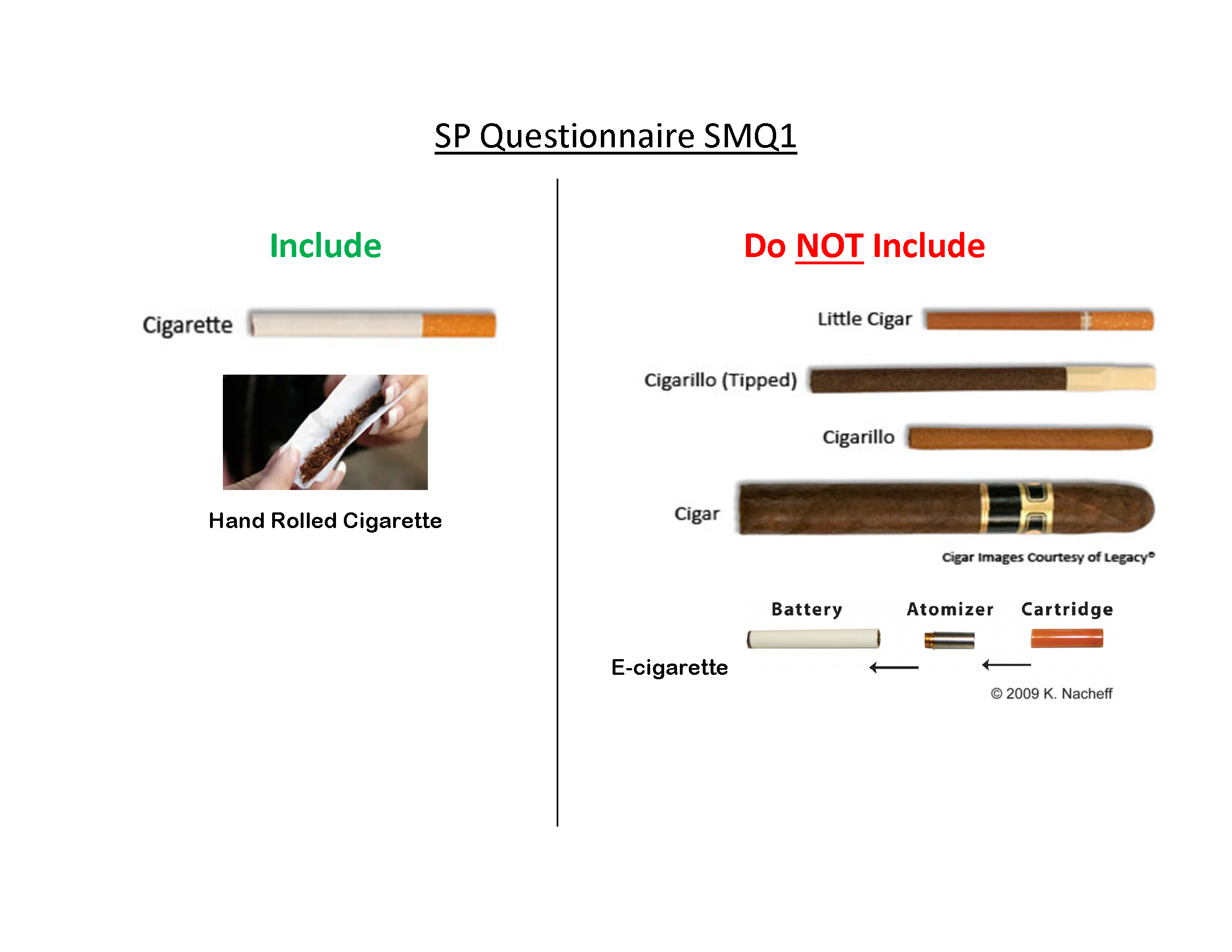
SMQ2 |
Cigars, cigarillos and little filtered cigars

SMQ3 |
E-cigarettes and other vaping devices
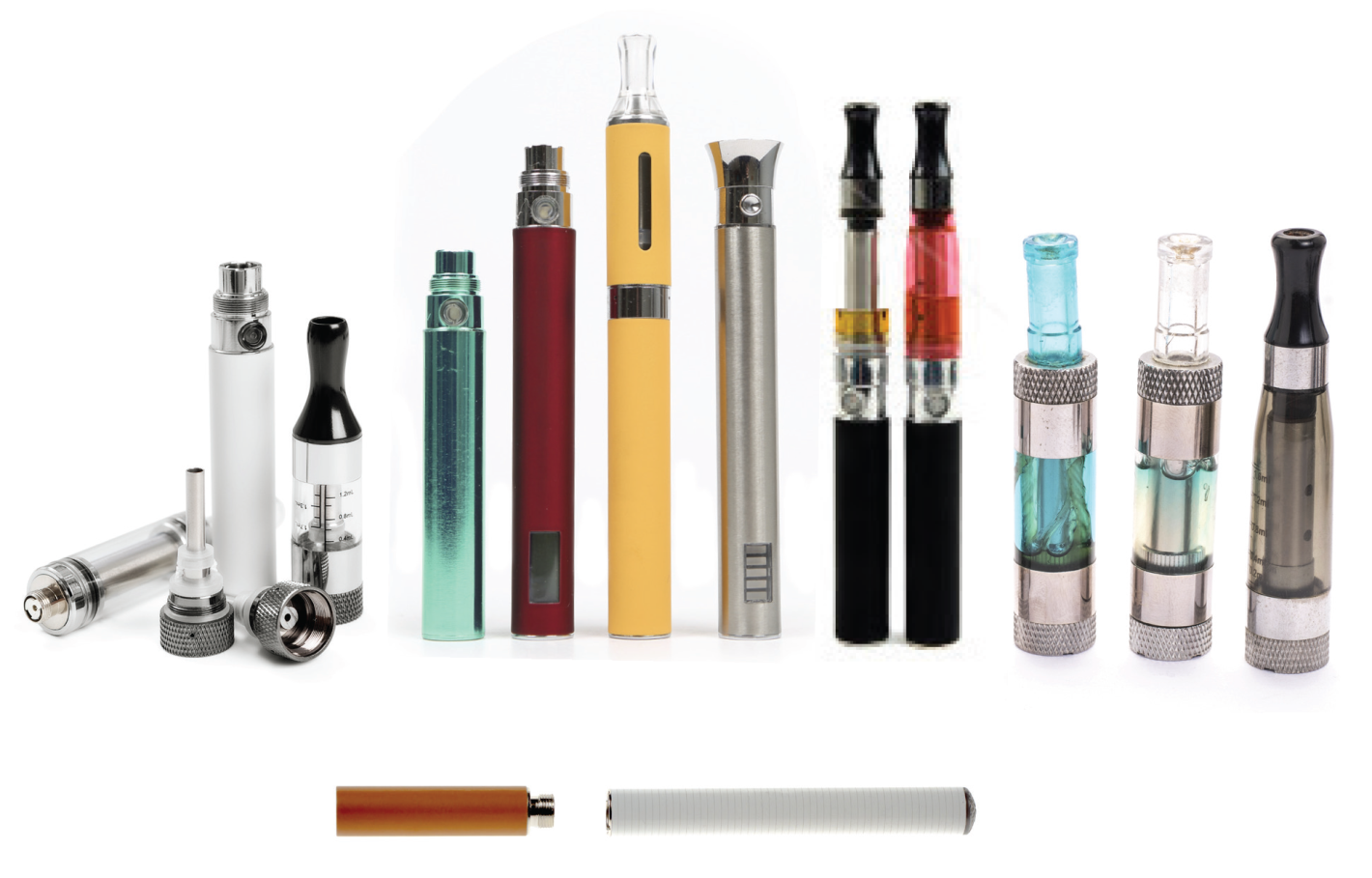
SMQ4 |
Smokeless tobacco products
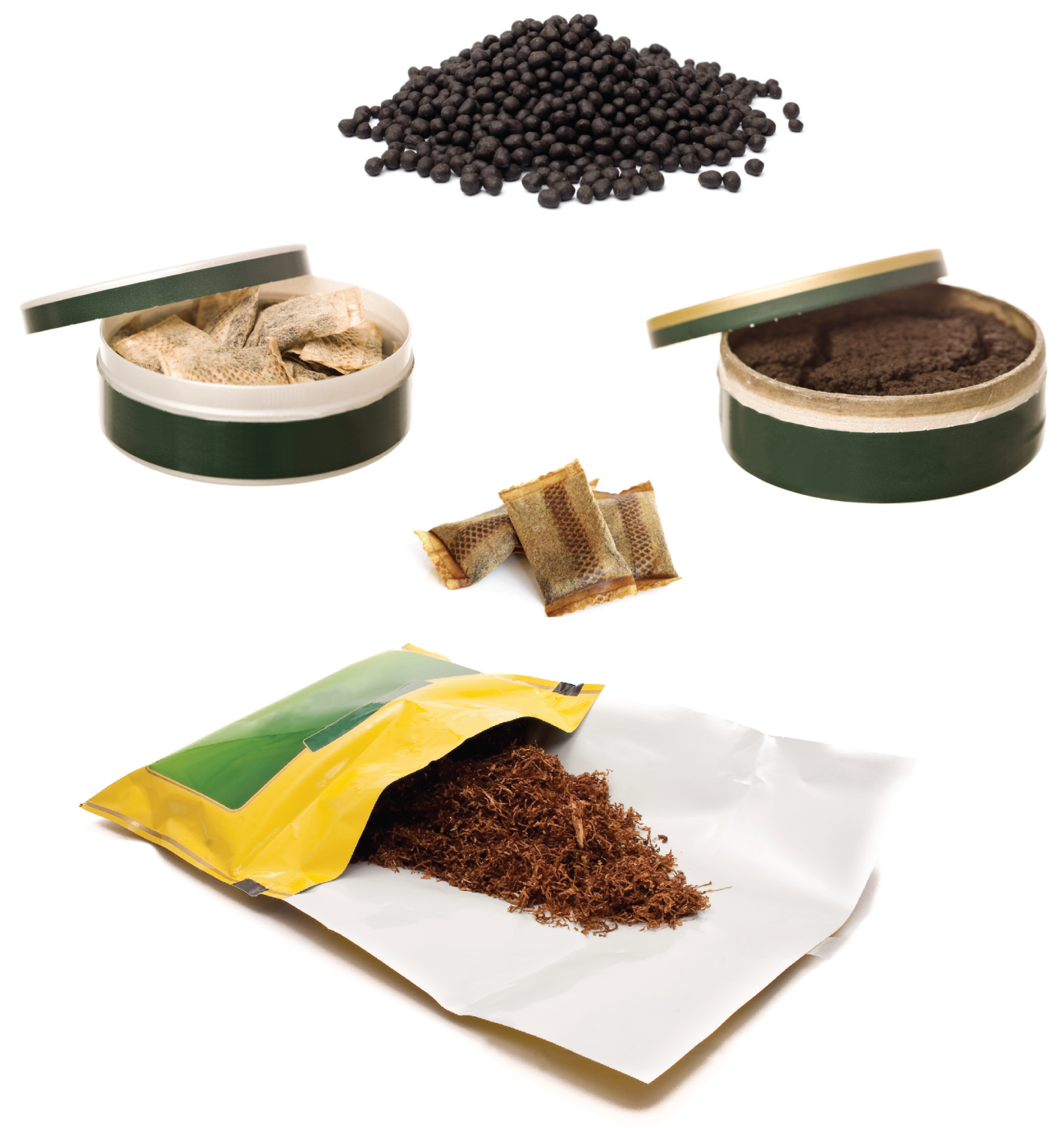
OCQ1
An employee of a private company, business, or individual for wages, salary, or commission
A federal government employee
A state government employee
A local government employee
Self-employed in own business, professional practice or farm
Working without pay in family business or farm
OCQ2
Always
Usually
About half the time
Seldom
Never
No noise exposure past 12 months


Only Spanish
More Spanish than English
Both equally
More English than Spanish
Only English


English
Chinese
Farsi/Persian
Hindi
Japanese
Khmer/Cambodian
Korean
Tagalog/Filipino
Urdu
Vietnamese
Other
DMQ1
Never attended/kindergarten only
1st grade
2nd grade
3rd grade
4th grade
5th grade
6th grade
7th grade
8th grade
9th grade
10th grade
11th grade
12th grade, no diploma
High school graduate
GED or equivalent
Some college, no degree
Associate degree: Occupational, technical, or vocational program
Associate degree: Academic program
Bachelor’s degree (example: BA, AB, BS, BBA)
Master’s degree (example: MA, MS, MEng, MEd, MBA)
Professional school degree (example: MD, DDS, DVM, JD)
Doctoral degree (example: PhD, EdD)
DMQ2
September 2001 or later
August 1990 to August 2001 (including Persian Gulf War)
September 1980 to July 1990
May 1975 to August 1980
August 1964 to April 1975 (Vietnam Era)
March 1961 to July 1964
February 1955 to February 1961
July 1950 to January 1955 (Korean War)
January 1947 to June 1950
December 1941 to December 1946 (World War II)
November 1941 or earlier
DMQ3
10. Mexican
11. Puerto Rican
12. Cuban
13. Dominican (Republic)
Central American:
14. Costa Rican
15. Guatemalan
16. Honduran
17. Nicaraguan
18. Panamanian
19. Salvadoran
20. Other Central American
South American:
21. Argentinean
22. Bolivian
23. Chilean
24. Colombian
25. Ecuadorian
26. Paraguayan
27. Peruvian
28. Uruguayan
29. Venezuelan
30. Other South American
Other Hispanic or Latino:
31. Filipino
32. Spaniard
33. Spanish
34. Spanish American
35. Hispano/Hispana
41. Chicana/Chicano
DMQ4
American Indian or Alaska Native
Asian
Black or African American
Native Hawaiian or Pacific Islander
White
DMQ5
1. Native Hawaiian
2. Guamanian or Chamorro
3. Samoan
4. Other Pacific Islander
DMQ6
10. Asian Indian
11. Bangladeshi
12. Bengalese
13. Bharat
14. Bhutanese
15. Burmese
16. Cambodian
17. Cantonese
18. Chinese
19. Dravidian
20. East Indian
21. Filipino
22. Goanese
23. Hmong
24. Indochinese
25. Indonesian
26. Iwo Jiman
27. Japanese
28. Korean
29. Laohmong
30. Laotian
31. Madagascar/Malagasy
32. Malaysian
33. Maldivian
34. Mong
35. Nepalese
36. Nipponese
37. Okinawan
38. Pakistani
39. Siamese
40. Singaporean
41. Sri Lankan
42. Taiwanese
43. Thai
44. Vietnamese
DMQ7
Yes, born in United States
Yes, born in Puerto Rico, Guam, American Virgin Islands, or other U.S. territory
Yes, born abroad to American parents
Yes, U.S. citizen by naturalization
No, not a citizen of the United States
HIQ1
Private health insurance
Medicare
Medi-gap
Medicaid
SCHIP (CHIP/Children’s Health Insurance Program)
Military
Health Care (Tricare/VA/
Champ-VA)
Indian Health Service
State-sponsored health plan
Other government program
Single service plan (e.g., dental, vision, prescriptions)
HIQ2

DSQ1a
VITAMINS
MINERALS |
Calcium Iron Zinc
|
Vitamin C Vitamin E
|
Calcium and Magnesium Calcium plus Vitamin D
|
MULTI-VITAMIN-- MULTI-MINERALS |
Flintstones Tri-Vi-Flor |
One a Day B-Complex |
Prenatals Centrum
|
HERBALS AND BOTANICALS |
Echinacea
Ginkgo |
Garlic
Ginseng
|
Saw Palmetto
|
FIBER |
Metamucil
|
Fibercon
|
Benefiber
|
AMINO ACIDS |
Lysine |
Methionine |
Tryptophan
|
OTHERS |
Fish Oil
|
Chondroitin
|
Glucosamine
|
DSQ1b
EXAMPLES OF ANTACIDS
Tums
Rolaids
Maalox
Mylanta
DSQ2
Decided to take it for reasons of my own
A doctor or other health provider told me to
DSQ3
To:
Build muscle
Gain weight
Get more energy
Improve digestion
Improve my overall health
Maintain health (to stay healthy)
Maintain healthy blood sugar level, diabetes
Prevent colds, boost immune system
Prevent health problems
Supplement my diet (because I don’t get enough from food)
For:
Anemia, such as low iron
Bone health, build strong bones, osteoporosis
Eye health
Good bowel/colon health
Healthy Joints, arthritis
Healthy skin, hair, and nails
Heart health, cholesterol
Kidney and bladder health, urinary tract health
Liver health, detoxification, cleanse system
Menopause, hot flashes
Mental health
Muscle related issues, muscle cramps
Pregnancy/breastfeeding
Prostate health
Relaxation, decrease stress, improve sleep
Teeth, prevent cavities
Weight loss
-
FAMILY
DMQ1
Never attended/kindergarten only
1st grade
2nd grade
3rd grade
4th grade
5th grade
6th grade
7th grade
8th grade
9th grade
10th grade
11th grade
12th grade, no diploma
High school graduate
GED or equivalent
Some college, no degree
Associate degree: Occupational, technical, or vocational program
Associate degree: Academic program
Bachelor’s degree (example: BA, AB, BS, BBA)
Master’s degree (example: MA, MS, MEng, MEd, MBA)
Professional school degree (example: MD, DDS, DVM, JD)
Doctoral degree (example: PhD, EdD)
CBQ1
EXAMPLES
OF PLACES OTHER
THAN GROCERY STORES
Convenience Stores (7-11, Mini Mart)
Wholesale Stores (Costco, Sam’s Club, BJ’s)
Target/ Wal-Mart/ Kmart
Dollar Store
Bakeries
Meat Markets
Vegetable stands
Farmer’s Markets
INQ1
U. $20,000 - $20,999
V. $21,000 - $21,999
W. $22,000 - $22,999
X. $23,000 - $23,999
Y. $24,000 - $24,999
Z. $25,000 - $25,999
AA. $26,000 - $26,999
BB. $27,000 - $27,999
CC. $28,000 - $28,999
DD. $29,000 - $29,999
EE. $30,000 - $30,999
FF. $31,000 - $31,999
GG. $32,000 - $32,999
HH. $33,000 - $33,999
II. $34,000 - $34,999
JJ. $35,000 - $39,999
KK. $40,000 - $44,999
LL. $45,000 - $49,999
MM. $50,000 - $54,999
NN. $55,000 - $59,999
OO. $60,000 - $64,999
PP. $65,000 - $69,999
QQ. $70,000 - $74,999
RR. $75,000 - $79,999
SS. $80,000 - $84,999
TT. $85,000 - $89,999
UU. $90,000 - $94,999
VV. $95,000 - $99,999
WW. $100,000 and over
INQ2
A. Less than $1,000
B. $1,000 - $1,999
C. $2,000 - $2,999
D. $3,000 - $3,999
E. $4,000 - $4,999
F. $5,000 - $5,999
G. $6,000 - $6,999
H. $7,000 - $7,999
I. $8,000 - $8,999
J. $9,000 - $9,999
K. $10,000 - $10,999
L. $11,000 - $11,999
M. $12,000 - $12,999
N. $13,000 - $13,999
O. $14,000 - $14,999
P. $15,000 - $15,999
Q. $16,000 - $16,999
R. $17,000 - $17,999
S. $18,000 - $18,999
T. $19,000 - $19,999
INQ3
Cash
Checking account
Saving accounts
CDs (Certificates of deposit)
Retirement accounts (such as IRAs, 401K, etc.)
Stocks
Bonds
Mutual funds
INQ4
A: $0 - $3,000
B: $3,001 - $5,000
C: $5,001 - $10,000
D: $10,001 - $15,000
E: $15,001 - $20,000
________________________________________
Cash
Checking account
Saving accounts
CDs (Certificates of deposit)
Retirement accounts (such as IRAs, 401K, etc.)
Stocks
Bonds
Mutual funds
INQ5
In my car
In a car that belongs to someone I live with
In a car that belongs to someone who lives elsewhere
Walk
Ride bicycle
Bus, subway or other public transit
Taxi or other paid driver
Someone else delivers groceries
Other
-
MEC
STEPS IN MAKING THE MEC APPOINTMENT
1. Inform the R that s/he has been randomly selected to participate in a health examination.
2. Inform the R that their household has been randomly selected for morning or afternoon/evening session.
3. Have the R read/sign the appropriate SP Consent/Assent Brochure.
4. Have the R read/complete the appropriate consent for specimen storage and continuing studies.
5. Arrange a general appointment date and time for the examination.
6. Complete the SP CAPI Appointment Module.
7. If necessary, have the R sign the Authorization for Transportation Arrangements for Person Under 18 Years of Age Form.
8. If necessary, tell the R that the field office will provide him/her with a school excuse letter.
9. Complete the appropriate appointment slip and review the instructions with the R.
10. Record all appointment information on the front cover of the Household Folder.
11. Make a closing statement to the R/Hand Certificate of Appreciation.
SUMMARY OF FORMS USED TO COMPLETE THE CONSENT PROCESS
|
Household |
Transport |
MEC |
MEC
Child |
Future |
Birth |
SP 0-11 Months |
Signed
by |
YES |
Signed
by |
N/A |
N/A |
Signed
by |
SP 1-6 Years |
Signed
by |
YES |
Signed
by |
N/A |
Signed
by |
Signed
by |
SP 7-11 Years |
Signed
by |
YES |
Signed
by |
Signed
by |
Signed
by |
Signed
by |
SP 12-17 Years |
Signed
by |
YES |
Signed
by |
N/A |
Signed
by |
Signed
by |
SP 18+ Years |
YES |
N/A |
YES |
N/A |
YES |
N/A |
MEC EXAMINATION COMPENSATION
SPs
16+ who agree to be examined at the
preselected time slot $125
SPs
16+ who refuse to be examined at the
preselected time slot $90
SPs
12-15 who agree to be examined at the
preselected time slot $75
SPs
12-15 who refuse to be examined at the
preselected time slot $60
SPs under age 12 $40
NonSP parent (per trip) $20
Child/Adult care $5.25/hour
Transportation allowance by area
INFORMATION ABOUT CHILD ABUSE
Physical child abuse is a serious and widespread problem. Every year more than a million children in the United States are abused, and between 2,000 and 5,000 die as a result of their injuries. Physicians are in a unique position to detect child abuse and are mandated by law to report such cases.
Physical abuse of a child is defined as the nonaccidental injury of a child. Some physical signs are unusual bruises, welts, burns or multiple broken bones. Usually, the injuries are more severe than those that could be attributed to the claimed cause.
CHILD ABUSE Q & A's
What do you mean by "clear evident of physical child abuse?"
This card contains information about and definition of "child abuse" obtained from two publications produced by the American Medical Association entitled "Diagnostic and Treatment Guidelines on Child Sexual Abuse" and "Child Physical Abuse and Neglect."
Why
are the people working on the survey
concerned about child
abuse?
We are concerned about the health, safety, and proper treatment of all children and our physicians are mandated by state law to report such cases.
Who
gave you the right to determine
whether my child is being
abused?
My purpose here today is to administer the Health and Nutrition Examination Survey questionnaire. However, the physicians in the Mobile Examination Center are mandated by federal law to report such cases.
What actions are taken in suspected cases of child abuse?
Investigations of suspected cases of child abuse are dependent upon the specific laws in your state.
Will
the physician at the Mobile Examination Center tell me
if s/he
is reporting my child as being abused?
Yes, they will inform you of their intention to do so.
Where do you get your guidelines on child abuse?
Guidelines vary from state to state, but the guidelines our physician uses for reporting come from two publications produced by the American Medical Association entitled "Diagnostic and Treatment Guidelines on Child Sexual Abuse" and "Child Physical Abuse and Neglect."
Are
your physicians mandated by law to report
instances of physical
abuse of adults?
The law mentioned in the consent form only applies to physical abuse of children.
How
can I get more information about child abuse
and how it is
treated in the National Health and
Nutrition Examination Survey
project?
My supervisor can give you more information and can be reached at (Give current phone number of Field Operations Coordinator).
If
I have more questions which you or your
supervisor cannot
answer, who else can I call?
You may call the agency in your state that deals with child abuse cases (Give agency number) or the person to contact on a national level is Dr. Kathryn S. Porter at the National Center for Health Statistics. Her toll free number is 1 800 452-6115.
AIDS INFORMATION SHEET
NHANES is a survey that looks at the health of the United States population, studying many diseases such as heart disease, diabetes, and osteoporosis. One of the major health issues in the United States is AIDS. Because it is such an important public health problem and scientists need to know how widespread the infection is in the general population, we plan to test the blood of everyone ages 18-59 years for AIDS infection.
You cannot get AIDS from any procedure in the mobile examination center. All needles used in obtaining your blood are sterile and are used only on you. All other equipment used during the examination is either disposable or sterilized after each use.
NHANES Text Messages
Fasting Text Reminder for Morning Appointments - SPs 12+
(Sent at 1:00 pm and 7:00 pm the day before the MEC exam appointment)
Your health exam is at 8:30am tomorrow morning. Please do not eat or drink anything except water after 11:30pm tonight. |
Su examen de salud es mañana a las 8:30 de la mañana. Por favor no coma ni beba nada excepto agua después de las 11:30 de esta noche. |
Call In Test Result Reminder Text - SPs 14-59
(Sent 3:00 pm 38 days after MEC exam if SP has not called in for test results)
Reminder: please call 888-301-2360 to get your password protected test results from the health survey. |
Recordatorio: por favor llame al 888-301-2360 con su clave para obtener los resultados de su prueba de la encuesta de salud. |
SP Age |
Fluid Ounces |
Equivalency in Tablespoons |
Equivalency in Teaspoons |
# of Tubes |
1-2 |
.3 |
½ |
1 ½ |
3 |
3-5 |
.5 |
¾ |
2 ¼ |
4 |
6-11 |
1 |
2 |
6 |
5 |
12+ |
4 |
7-8 |
21-24 |
Interviewer Procedures for Identifying, Working with, and Paying Interpreters
for Non-English and Non-Spanish Speaking Households and SPs
Identifying Language Needs
Present Language Identification Card to identify respondent’s language.
If language identified is one in which an Introduction Card (Apple Card) is available, present Introduction Card to find good time to return with interpreter.
Discuss situation with supervisor, including information on spoken language and a good time to return.
Minimum Qualifications for Identifying Interpreters
Screener/Relationship Questionnaires: try to find a household member, friend or neighbor to assist in the conduct of interview.
SP/Family Questionnaires: call SM before beginning interview to obtain approval.
Interpreter must be age 18 or older.
Interpreter must speak and understand English as well as the respondent’s language.
If you cannot identify an interpreter, the Field Office staff will attempt to recruit one.
Procedures for Working with Interpreters
If the interpreter is not a family or household member or arranged by FO, explain and have interpreter sign a Non-Disclosure Form.
Record interpreter’s name and contact information in CAPI instrument and inside Household Folder.
Record household language at top of the Record of Contacts page.
While interpreter available, obtain signature on appropriate study consent forms in one of the five translated languages (Spanish, Chinese Simplified, Chinese Traditional, Korean, Vietnamese).
Household Interview Consent.
Consent/Assent and Parental Permission for Examination at the Mobile Examination Center.
Child Assent for the Examination at the Mobile Exam Center.
Consent/Assent and Parental Permission for Specimen Storage and Continuing Studies with or without DNA.
Authorization for Transportation Arrangements for Persons Under 16 Years of Age.
If SP does not speak any of the translated consent form languages, use English Consent forms and have interpreter translate your explanation of each form.
When English consent forms are used for a non-English speaking SP, the interpreter will sign on the witness line.
Once all appropriate consents have been obtained, arrange for a MEC appointment following protocols.
Make sure identified interpreter can accompany the SP to the MEC.
When contacting Field Office for MEC appointment, have interpreter name and contact information available.
Training Interpreters
Interpreter is recruited by the interviewer: Prior to conducting the SP/Family Questionnaires, use the NHANES Interpreter Protocol Handout to train the interpreter.
Interpreter is arranged by the Field Office: Field Office training depends on amount and type of interpretation person is expected to conduct. Field Office interpreter training can include:
Overview of the study,
Review of the interpreter protocol, (Required)
Attendance at the MEC Dry-Run or tour of the MEC,
Review of the Confidentiality Brochure and Health Measurements List with a field staff member, and
Review of the Advance Letter and Outreach folder with study brochures to read at home. (Required)
Paying Interpreters
Do not discuss any payments with potential interpreters until receiving approval from the Study Manager. Below are some of the payments that may be approved.
Household members: Cannot be paid for their time.
Non-household family, friends and neighbors: Do not offer payment for their time unless it is requested. Regional rates vary for payment but can be from about $10.50 to $15 an hour. Study Managers can only approve regional rates. Any higher rates require home office or NCHS approval, which will take time. Interpreters who are paid for their time must go in-person to the Field Office to receive payments. Interpreter payments are tracked in the Field Office/ISIS management system. Appointments for payment must be made with the Office Manager and a signed receipt from the interpreter must be obtained. Non-household family, friends and neighbors who drive themselves to the household or MEC to interpret for an SP can be paid mileage.
Interpreters arranged by the Field Office: Have already agreed to a pay rate and will be paid in-person in the field office.
In general, interpreters should not be paid their hourly rate portal to portal but instead be paid only for their time working in the field or in the MEC.
 NHANES
NHANES
INTERPRETER
PROTOCOL
This document summarizes the interpreter protocol for NHANES participants who speak languages other than English and Spanish. The role of the interpreter is to provide the link between the data collector and the participant. The interpreter offers a channel through which statements are conveyed from one language into another.
All interpreters are expected to assume the following basic responsibilities and employ the following procedures when working with NHANES participants and data collectors, which include household interviewers and examiners at the Mobile Examination Center (MEC).
1. Basic Responsibilities
Professionalism and Confidentiality – The interpreter must exhibit professionalism at all times and maintain the confidentiality of the data collector-participant dialogue. As well as adherence to the interpreter protocol, important aspects of professionalism include: being courteous but not overfriendly, being honest but tactful, and showing respect to the data collector and the participant.
Accuracy and Completeness – The interpreter should accurately and completely convey statements made by the participant and the data collector. This does not mean that a literal interpretation is necessarily appropriate. Interpreters must accurately relay the full meaning and spirit of what is said, rather than a literal interpretation per se, which conveys all of the words but not always all of the meaning.
The interpreter must communicate everything that is spoken by the participant and data collector. The same applies to hard-copy scripts and computer screens that the data collector asks the interpreter to read to the participant. The interpreter’s role is not to decide what statements are relevant—no matter how familiar the interpreter becomes with the NHANES materials or questions.
Cultural Bridge and Knowing Limits – Interpreters need the ability to serve as a cultural bridge between the participant and data collector, while keeping within the limits of the interpretation process. Besides repeating what the participant says to the data collector, certain instances may call for the interpreter to explain the cultural context of a specific statement. However, great care should be taken to provide only the essential, cultural background information. Guessing or making up terms is not acceptable. If the interpreter does not understand something that was said, he or she should ask for clarification in order to provide a complete and accurate interpretation.
2. Specific Procedures
Interpreter Introduction – State your name and role to the participant. Introduce yourself and tell the participant that you are the interpreter. Introduce the data collector as well. The data collector may also initiate the introductions.
Interpret in the First Person “I” – Do not use, “He said, she said…” when interpreting what the participant or data collector has said. For example, instead of saying, “He says he listened to loud music…” the interpreter should state, “I listened to loud music….” The interpreter is the voice, or mouthpiece, of both the participant and the data collector.
Positioning and Eye Contact – Use positioning and eye contact to foster the relationship between the data collector and the participant. The interpretation process should promote eye-to-eye contact between the data collector and the participant. The interpreter may use eye contact, but it is also acceptable to look down and avoid eye contact while interpreting. The interpreter’s position in the setting—between the participant and the data collector or beside either one—can also facilitate the data collector-participant dialogue.
No Side Conversations – Avoid unnecessary conversations with the data collector or the participant during the interview setting. Irrelevant discussions or “side conversations” between the interpreter and the data collector are impolite and unprofessional whether or not the participant fully understands what is spoken. However, the participant will often initiate conversation with the interpreter. To politely dissuade the participant, you can simply offer to talk more after the interview is finished. In such cases, always be sure to inform the data collector so that he or she understands what is going on.
Water Collection Instructions
INTRO: The NHANES survey is studying fluoride. Fluoride is in many dental products such as toothpaste, but is also found in most tap water. For this fluoride study, I will need to collect a tap water sample using a collection kit. This kit contains a plastic water vial in a plastic zip lock bag. I will collect the water sample according to the instructions I have been given. I will take the water sample with me when I leave.
Instructions for collecting tap water sample:
1. Identify the faucet used mostly for drinking and cooking. If only bottled water is used for cooking and drinking, still take a tap water sample from a faucet in the home. (Do not take water sample from bottled water or some other place. All samples should be tap water.)
2. Once you have identified the faucet from which you will take the sample, ask the respondent if there is a filter attached. This could be a full house filter or a filter attached to this specific faucet. (Filters may reduce or remove fluoride.)
3. Turn on the water.
4. Let the water run for 10-15 seconds. (The first water out of the tap may have higher amounts of fluoride due to evaporation. So, be sure to let the water run for 10-15 seconds).
5. Take the cap off the 10mL plastic tube. Carefully fill the tube halfway (to about the 5 mL line) with water.
6. Screw the cap tightly on the tube.
7. Turn the tube upside down to make sure it does not leak. (If the tube does leak, then remove the cap and try tightening the cap again.)
8. Put the water vial back into the plastic bag.

Stand 338+
| File Type | application/vnd.openxmlformats-officedocument.wordprocessingml.document |
| File Title | OL1 |
| Author | Lori Houck |
| File Modified | 0000-00-00 |
| File Created | 2021-01-21 |
© 2025 OMB.report | Privacy Policy
